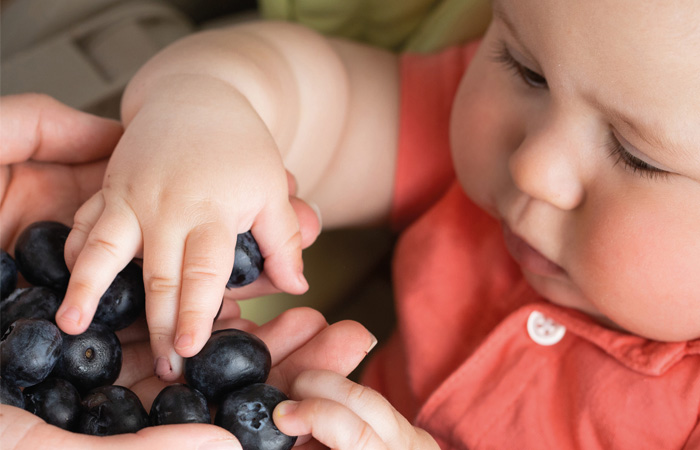2. Baby-led weaning
In Weaning
Follow this topic
Bookmark
Record learning outcomes
More and more parents are turning to baby-led weaning over the more traditional route of spoon feeding purées, but what are the benefits and how should it be approached?
Baby-led weaning involves offering babies a range of different foods that they can pick up and eat themselves, rather than sticking to the traditional first foods of purées and mashed fruits and vegetables. It is thought that the benefits of baby-led weaning include improving motor skills, introducing babies to a wider range of tastes and textures early on and making eating more enjoyable.

Softer finger foods such as cooked sticks of carrot, broccoli and sweet potato, and chunks of avocado and banana are good options to start with. These should be cut up into pieces big enough to hold in their fist and stick out the top of it – about the size of an adult’s finger. Parents should be reminded not to put food into their baby’s mouth. They should let them put it in by themselves so that they can control it as it moves backwards, which can help reduce the risk of choking.
Some parents prefer baby-led weaning to spoon feeding, while others combine a bit of both, and it often comes down to the preference of the baby. It’s important to reassure parents that there’s no right or wrong way to wean their baby. The most important thing is that the baby eats a wide variety of food and get all the nutrients they need.
Parents should seek advice from a health visitor or GP before trying baby-led weaning if there is: a family history of food allergy or intolerance or digestive problems, if the baby has special needs, or if the baby was born prematurely.
